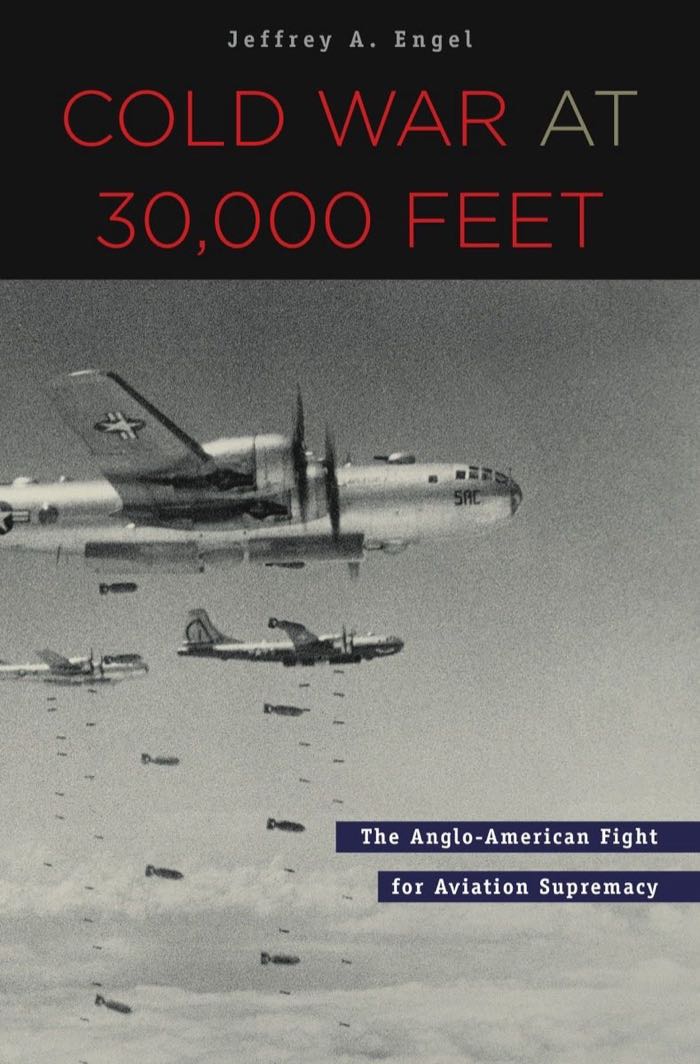Cold War at 30,000 Feet: The Anglo-American Fight for Aviation Supremacy
Reviewed date: 2007 Sep 3
303 pages
View this book at Amazon.com
Read a detailed review by Max Hastings
After World War II, Britain's cities and infrastructure were in ruins, and her treasury was empty. To survive the Cold War as more than a vassal of America, British officials realized they need to re-establish themselves as a great power. The only avenue to great power status was aviation. This put them in direct competition with the Americans:
Only Britain and the United States possessed viable aircraft industries immediately following the war; only these two countries wielded the manufacturing capacity, the technological know-how, and the financial resources to compete for dominance in global aircraft and airline markets.
Britain hoped that by taking the lead in the global aircraft market, they could improve their economy and earn the money necessary to become a great world power. The British had about a five year lead over the Americans in jet engine technology, and they hoped to parlay that lead into dominance of the global airplane market.
America had different ideas. Security was their primary concern. Where the British saw business opportunities that would help them rebuild a shattered economy, the Americans saw red--Commies, that is. America's only concern was preventing technology from falling into Soviet hands. Without long-range jet bombers, the Soviets couldn't drop nuclear bombs on America, so US policy was geared entirely to preventing the Soviets from developing jet engines. The poor British were already within range of Moscow's bombers, so they had nothing to lose by selling their aeronautical secrets to the world.
The Americans' fears proved prescient. In 1946, over strenuous American objections, the British sold a number of jet engines to Moscow. The Russians reverse-engineered the jets, copied them, and used them to power MiG-15 fighters. MiG-15s were sold to the Chinese, who used them in Korea in 1951; the MiGs out-performed the best that the Americans and British could put in the skies.
Despite the MiG-15 affair, the British were still keen on selling aircraft to the world. The de Havilland Comet, the world's first jet-powered passenger plane, seemed poised to take the lead. The British were willing to risk their special relationship with America by selling Comets to the world, in violation of international export restrictions. Technical problems with the Comets--they tended to explode spontaneously during flight--delayed British plans. By the time de Havilland worked out the bugs in the Comet design, Boeing had developed its own jetliner, and the Americans had taken an insurmountable lead in the aviation industry.
In the 1960s, the UK and America clashed numerous times over proposed British aircraft sales to communist China. The British believed that trading with China would ease Cold War tensions; America's policy was to destroy the Chinese economy by isolating them from trading with the Western world. In the end, the British were unwilling to risk their special relationship with Washington for the sake of a few sales. They held the party line.
America's attitude toward communist China finally changed in the 1970s, when aircraft technology was no longer cutting edge. But by that time, the British aircraft industry was not competitive, and the British had given up their ambitions of becoming a great world power.
The British never really had a chance to beat America in aviation. America's strong domestic economy and its huge military need for airplanes gave US aircraft manufacturers too great an advantage over the British, who depended almost wholly on foreign sales.
